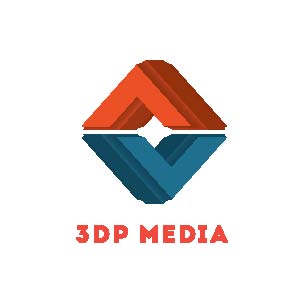…So Wondrous That—Even If They Are Only Half As Large As Projected Over A Decade Plus—Ever Responsible Government, Business And Non-Profit Organization Anywhere Needs To Start Considering The Potential Implications For Their Constituents…NOW…
We—the “citizens” of the technologically driven world (and, in one way or another, that’s all 6 billion of us alive today)—are just on the threshold of the Fourth Digital Disruption.
In my lifetime, I’ve been been involved—as a player and/or a professional observer—in three other such Disruptions. First, was the Personal Computer. Second, the Internet. Third, Social Media. And, now—Number Four—3D Printing. Or, as I call it here—and in all our activities as media house, think tank, event producer and enterprise builder—”3DP.”
In 2012, the worldwide market in the 3DP segment was $2.2 billion. This is according to longtime industry analyst Terry Wohlers of Wohlers Associates in his 18th-consecutive, annual Wohlers Report 2013 publication. By 2015, Wohlers projects that the 3DP industry will double in size to $4 billion. By 2021, Wohlers projects the industry will generate $10.8 billion worth of goods and services.
Wohler’s predictions are breathtaking enough. BUT, if you want “scary big,” you have to go to conservative—and Fortune 50-dominating—consulting firm McKinsey & Company.
By 2025, McKinsey & Co. projects 3DP “will have a direct economic impact of between $230 & $550 billion.” Big business worldwide trusts McKinsey—its research, opinions and directives—more than any other elite business consulting firm on the planet. If it weren’t authored by McKinsey & Co., this forecast would sound crazy. You can read all about it in “Disruptive Technologies: Advances that will transform life, business, and the global economy.”
McKinsey’s WORST-case 3DP growth-scenario projects a 100-fold increase in segment impact—over Wohlers’ actual 2012 numbers—in just 12 years. This is in line with the growth rates of our first three Digital Disruptions. Based on sheer dollar-volume and the acceleration and height of past waves of technology, THIS “tech-tsunami” is certainly believable.
BUT, our Fourth Disruption promises a societal makeover different from the first three. This is because our 3DP Disruption is grounded in the production of goods, NOT services. Disruptions One through Three were basically digital in nature. DigiTech is a multiplier of action. DigiFab (see below) is a multiplier of things. Atoms NOT bits. AND, that will have a profound effect on job generation. Making things also makes the Middle Class. So, our 3DP Disruption may also remake the American Dream.
This “tech-tsunami”—this Re-Dreaming—can be successfully “surfed.” Those organizations and players with appropriate vision will plan, prep and position themselves to capture this 3DP-Disruption/Re-Dreaming tidal-wave.
3DP—because “3DP” will become the natural contraction of “3D Printing”—has become the iconic term of art for this Fourth Disruptor. In actuality, this 3DP engine is much broader. In fact, it should more accurately be called “Digital Fabrication.”
DigiFab includes not just “additive manufacturing”—the industrial or professional phrase for 3DP—but “subtractive manufacturing” and “formative manufacturing.” Subtractive and formative manufacturing are the traditional modes of “making” recognized for two and a half centuries as the drivers of our Industrial Revolutions. Subtractive is the process of removing material from a block or billet to create the object (think milling of metal). Formative uses molds or extrusions or drawing ductile material to create the object (think casting of metal).
3DP, then, is the handle by which this digital phenomenon is coming to be known. And, it’s an “overnight success” with a 30-year history.
3D Printing was invented by Chuck Hull, an American engineer, in the early 1980s. (This is so long ago in commercial terms that the original patents are expiring: giving a whole new boost to the technological innovation around 3DP.)
Chuck Hull found a ready industrial-segment client-base in the American automotive industry—just then reeling from the onslaught of imported Japanese cars. Detroit used Hull’s 3DP machines for rapid prototyping. No tool-and-die high costs and no long turn-around production delays. Yes, early 3D Printers cost hundreds of thousands of dollars. But, they made “DIY” manufacturing-prototypes possible.
Then, the aerospace industry discovered 3DP. The impact of the technology—and its rapid, revolutionary evolution—has cascaded from industrial segment to industrial segment. Now, it’s creating whole NEW 3DP segments—like DIY object-printing at home, printing food, printing human tissues…the mind boggles…
Much more to cover here! And, we’ll be doing it…
C’mon Back!
LAND

 NYC3DPLand Tweets
NYC3DPLand Tweets